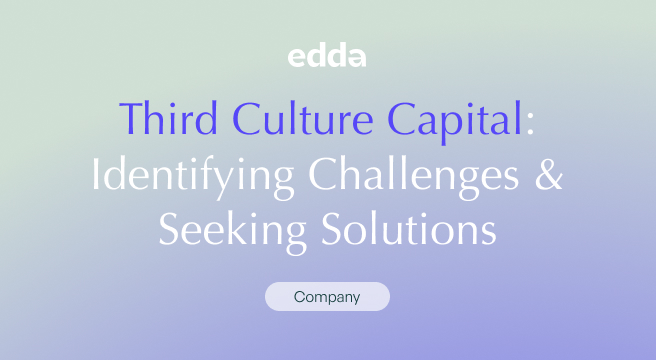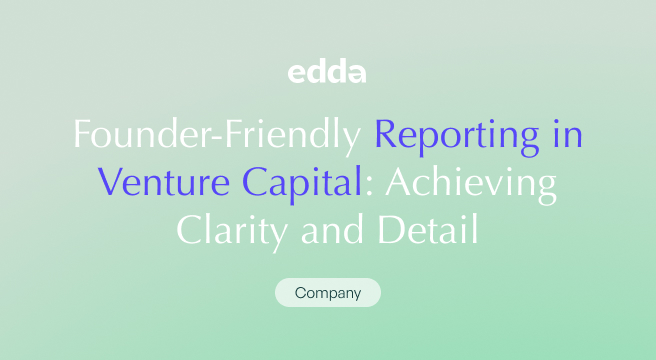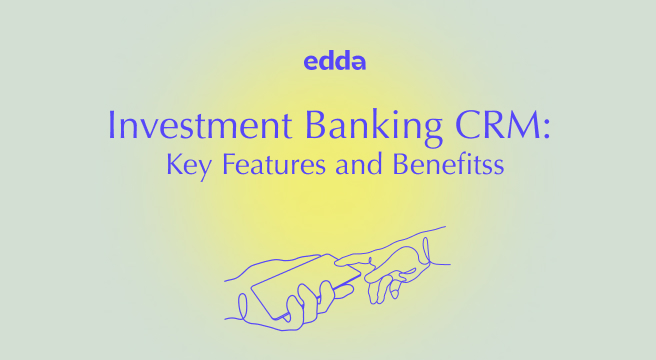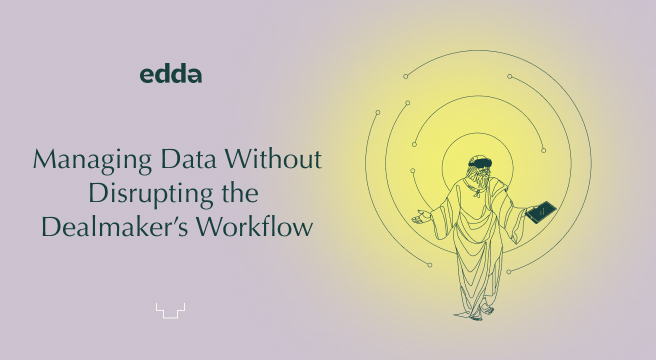Firms aiming to streamline their operations and amplify their strategic impact are doing so through the integration of VC tech platforms like venture capital CRM. This trend is particularly pronounced in highly innovative sectors such as healthcare.
Among the firms at the forefront of this transformation is Third Culture Capital (3CC), a venture capital entity distinguished by its commitment to revolutionizing the healthcare industry. With its foundation in Boston, MA—a city renowned for its medical and technological innovation—3CC is dedicated to fostering diversity, innovation, and equity within the healthcare sector. The firm operates on the principle that the most transformative healthcare solutions are born at the intersection of diverse cultural and professional backgrounds.
In this article, we’ll explore how 3CC, emblematic of forward-thinking venture capital firms, addresses the challenges inherent to the industry. We’ll also explore the symbiotic relationship between technology like Edda’s best CRM for venture capital and venture capital firms, illuminating the pathways to more efficient, inclusive, and impactful investments in the healthcare domain.
Who are Third Culture Capital?
Founded in Boston, a city at the forefront of medical and technological advancements, 3CC is driven by a mission to foster diversity, innovation, and equity in healthcare investments. The firm’s name itself, “Third Culture,” reflects a commitment to blending diverse cultural and professional backgrounds to spark transformative healthcare solutions.
3CC’s investment strategy is distinctive. It focuses on startups and innovations at the intersection of healthcare, human capital, and financial capital. This approach is predicated on the belief that the most significant advancements in healthcare will come from leveraging a wide range of perspectives and expertise. 3CC seeks out opportunities that promise substantial financial returns but also have the potential to make a meaningful impact on healthcare systems and patient outcomes worldwide.
At its core, 3CC is about building a community of innovators, entrepreneurs, and thought leaders who share a vision for a more inclusive and innovative healthcare industry. The firm’s commitment to equity is evident in its efforts to lower the barriers to entry for underrepresented entrepreneurs, ensuring that the future of healthcare innovation is diverse and inclusive.
Identifying Challenges in Venture Capital Operations
Venture capital firms, especially those like 3CC that focus on the healthcare sector, face a unique set of challenges. These hurdles stem from the inherent complexities of healthcare innovation, the competitive nature of venture capital, and the firm’s commitment to diversity and equity.
Navigating First-Time Fund Management
For new firms, the initial phase of establishing a strong foothold in venture capital is fraught with challenges. 3CC had to navigate this steep learning curve. Doing so included not only mastering the art of identifying promising investment opportunities but also building a strong network of partners, service providers, and stakeholders. Managing a growing portfolio of investments, each with its own set of risks and potential, added further complexity to the equation.
Enhancing Operational Efficiency
Operational efficiency is a must for venture capital firms operating in a very fast-paced and competitive environment. Efficiently managing deal flows, maintaining strong relationships with stakeholders, and conducting thorough due diligence processes are essential components of success. For 3CC, streamlining these operations was a necessity to ensure that the firm could swiftly and effectively respond to investment opportunities without compromising on the quality of decision-making or due diligence.
Democratizing Access to Capital
A foundational mission of 3CC is to break down the barriers that historically have prevented diverse entrepreneurs from accessing venture capital. The traditional venture capital model often favors entrepreneurs within established networks, leaving talented innovators from underrepresented backgrounds at a disadvantage. 3CC sought to challenge this status quo by finding innovative ways to reach and fund entrepreneurs who might otherwise be overlooked.
Fostering Collaborative Decision-Making
Incorporating diverse perspectives into the investment decision-making process is a cornerstone of 3CC’s philosophy. The firm recognized the value of involving its venture partners and stakeholders in evaluating potential deals, leveraging their varied insights and expertise. This collaborative approach enriches the evaluation process and aligns with 3CC’s commitment to diversity and inclusion, ensuring that investment decisions are informed by a broad spectrum of viewpoints.
Edda’s Role in Addressing 3CC’s Challenges
To surmount the challenges identified, 3CC integrated Edda’s suite of software solutions, a strategic move that significantly streamlined its operations and enhanced its investment strategy.
Streamlining with Edda’s CRM
At the core of Edda’s solutions for 3CC was its Customer Relationship Management (CRM) system, designed to optimize the firm’s organizational efficiency. This CRM system became instrumental in managing the intricate web of interactions with startups, investors, and other stakeholders.
By providing a centralized platform for tracking these interactions, Edda’s CRM enabled 3CC to enhance its productivity, ensuring that critical information was readily accessible and actionable. This streamlined communication while facilitating a more efficient due diligence process – crucial for making informed investment decisions swiftly.
Expanding Outreach and Inclusivity
Edda’s investor relations management software empowered 3CC to broaden its approach to sourcing deals, aligning with the firm’s mission to democratize access to capital. By integrating a user-friendly web form on its website for pitch submissions, 3CC leveraged Edda to open doors for founaers from diverse backgrounds, who might not have the traditional connections to venture capital. This strategic use of technology ensured that a wider pool of entrepreneurs could present their ideas, significantly expanding 3CC’s deal pipeline and reinforcing its commitment to inclusivity.
Enhancing Collaborative Decision-Making
A key feature of Edda’s platform was its ability to foster a collaborative environment for deal screening and evaluation. This functionality enabled venture partners at 3CC to actively participate in the investment process, bringing their unique perspectives and expertise to the table. By facilitating this collaborative approach, Edda ensured that the firm’s investment decisions were enriched by a multitude of insights, enhancing the quality of its portfolio and aligning with its ethos of diversity and innovation.
Through the adoption of Edda’s software solutions, 3CC effectively tackled its operational and strategic challenges, setting a new standard for efficiency and inclusivity in venture capital. This partnership bolstered 3CC’s internal processes and also amplified its impact on the broader venture capital and healthcare sectors showcasing the transformative potential of targeted technological solutions.
Leveraging Edda: A Blueprint for Healthcare Venture Capital Excellence
Edda’s integration within 3CC’s framework demonstrates the significant benefits advanced software solutions can offer to firms’ venture capital tech stack, especially those focused on healthcare innovation. This collaboration showcases a scalable model for leveraging technology to streamline venture capital operations, enhance strategic decision-making, and expand access to funding for diverse entrepreneurs in the healthcare sector.
For healthcare-focused VC firms, Edda can provide critical tools for managing the details of investment opportunities and stakeholder relationships. The venture capital CRM, for example, can help firms efficiently track and analyze interactions with potential investment targets, healthcare innovators, and other key stakeholders, thereby enabling more informed and timely decisions.
Furthermore, Edda’s capabilities to facilitate wider outreach can be particularly advantageous in the healthcare domain, where cutting-edge solutions often emerge from unexpected sources. By employing user-friendly digital interfaces for pitch submissions, VC firms can tap into a broader spectrum of healthcare innovations, including those from underrepresented founders who may lack traditional access to venture capital networks.
Additionally, the collaborative features of Edda’s venture capital management software can enhance the decision-making process by enabling a more inclusive and multidisciplinary approach to evaluating healthcare investments. This is crucial in a field where the implications of new technologies or treatments can be profound and dynamic, requiring insights from various perspectives to fully understand their potential impact.
In summary, Edda’s role in 3CC’s strategy not only resolved immediate operational challenges but also laid the groundwork for a more dynamic, inclusive, and efficient approach to venture capital in healthcare. This model presents a compelling case for other healthcare-focused VC firms to consider integrating similar software solutions to drive innovation and impact in the sector.








